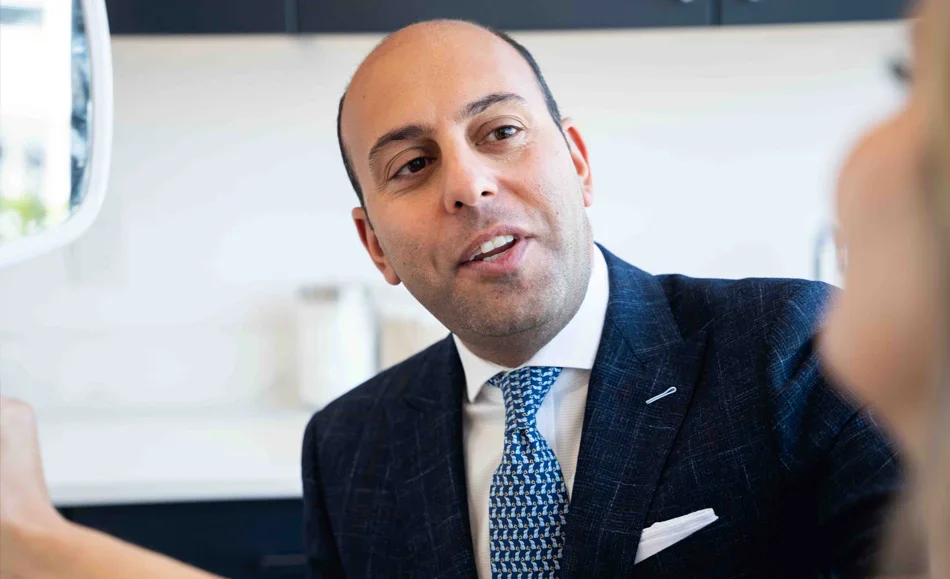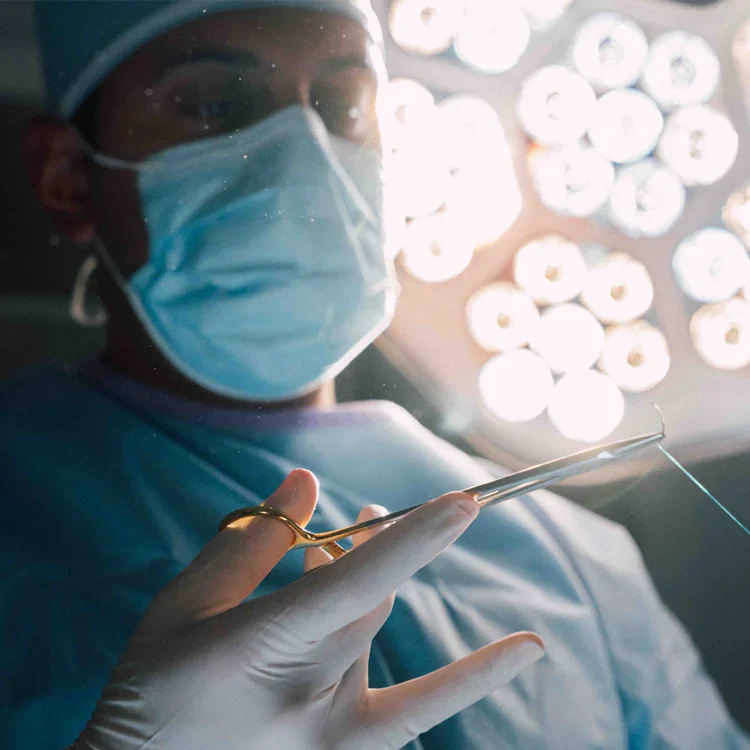Introduction
Skin Growth Removal
Your skin can experience changes as you get older. Unsightly skin growths, such as moles and cysts, can appear and make you feel self-conscious about your appearance. Many of these growths can be benign, but some can become cancerous. Skin growth removal can restore your appearance and protect your overall health. If you are struggling with skin growth, there are several surgical and non-surgical skin growth removal services here at New You Plastic Surgery in Long Island and New York City that can help improve your appearance. The procedures for the treatment plan will depend on your unique needs.

What is Skin Growth Removal?
Skin lesions are abnormal growths on the skin that can look like a lump or a sore or be a discolored area of the skin, and Skin Growth Removal surgery is a common treatment for removing such lesions. While not usually a complicated procedure, it’s good to know what to expect when talking to your doctor.
There are dozens of conditions classified as skin growth. Not all of these, such as acne, psoriasis, or contact dermatitis, require removal surgery. These are some of the more common skin growths that we can take care of at New You Plastic Surgery, and what you can expect from your surgery.
These procedures are performed by our highly qualified New York plastic surgeons. Dr. Nikfarjam and Dr. Micheline Goulart specialize in delivering outstanding results for his skin growth removal clients. Contact New You Plastic Surgery to discover more about the risks and benefits of each procedure. You may also want to review before and after pictures from previous clients so you can have an idea of what to expect from skin growth removal.
Raised scars called keloids can form on your skin after a traumatic injury. They can show up anywhere on your body. Sometimes, they can show up three months after the original injury. Keloid removal can restore your appearance and boost your confidence and self-esteem.
Keloid removal is a skin growth removal procedure that can be performed in under an hour using local anesthesia. The surgery is typically used to remove extensive keloids. After being surgically removed, additional treatments can be used to keep them from returning. These treatment options may include silicone sheet dressings, compression therapy, and injectables. Laser treatment and radiation therapy can also be used to shrink keloids.
You may experience redness and swelling that can be relieved with pain medications and ice packs. Many people return to work within a couple of days after the procedure. It may take up to two months for incisions to fully heal. You will receive special after-care instructions to help with the recovery process.
Moles can appear anywhere on your body and are typically benign. If these skin growths change color, size, or shape, they may need to be removed. Certain moles can cause serious health risks, such as cancer if left alone. Mole removal can enhance your appearance and feel more self-confident.
There are a few treatment options for mole removal. These treatments can include laser therapy, cryotherapy, and surgical removal. These cosmetic procedures can be done in the plastic surgeon’s office using local anesthesia. The goal of the procedure is to completely remove the mole so it does not return. You may be able to return to work immediately. Some itching, redness, or swelling can be expected and can go away within a few days.
You may need to undergo a taping protocol for two weeks to protect the site from UV rays. Additional topical gel treatments could be necessary for the next three months to minimize scarring. You may need to avoid hot tubs, pools, and saunas for a couple of weeks to minimize the potential for complications. You will receive special after-care instructions from the plastic surgeon to assist you with the recovery process.
Benign tumors known as osteomas can cause pain and problems with vision. They can also make you feel self-conscious about your appearance. These forehead bumps can be removed through osteoma removal surgery to restore your self-confidence in the way you look.
Osteoma removal is a cosmetic procedure performed in three hours using general anesthesia. Some patients may be able to have the procedure performed using local anesthesia. A plastic surgeon uses a drill and a bone-cutting device to remove the osteoma. Various surgical techniques may be used to make incisions into the skin. Depending on the technique used, you could experience visible scarring, hair loss, or scalp numbness.
You may need to wear a compression bandage for the first 24 hours. Swelling and bruising are to be expected for the first two weeks. Scar gel may need to be applied for the first three months to minimize scarring, and sun exposure may need to be avoided for several months. You will receive special care instructions to be followed after the procedure.
Benign growths known as sebaceous cysts can develop on your face when an oil gland gets blocked. Fluid builds up, causing a mass on your face to form. If the cyst becomes infected, it will need to be removed. Sebaceous cyst removal is a surgical procedure to eliminate the cyst to clear the infection and restore your appearance.
The procedure for sebaceous cyst removal is done in under an hour using local anesthesia. If the cyst is infected, it may need to be treated with antibiotics before removal. During the in-office surgical procedure, an incision is made directly over the cyst to extract it. It can also be removed through drainage by a syringe.
You can resume normal activities immediately after the procedure. It will take a couple of weeks for the area to heal fully. Scarring is minimal and should fade over time. You may need to follow a taping protocol for two weeks to protect the area from UV exposure. A scar gel treatment for three months may be required to fade scarring. Swimming, immersed bathing, and hot tubs may be prohibited for two weeks after the procedure.
Skin lesions can show up on your skin as lumps, sores, moles, or skin cancer. These lesions can cause you to become self-conscious about your appearance. These lesions also have the potential to become cancerous, which can significantly impact your health. Skin lesion removal can restore your skin so you can feel better about the way you look.
There are various outpatient cosmetic procedures for skin lesion removal that are performed using local anesthesia. Surgical excisions can be performed to remove skin lesions by scraping them off the skin’s surface. The surgical techniques vary, depending on the extent of the skin lesions and the potential for skin cancer. Some lesions can be removed by shaving them off while others may require flap reconstruction or a skin graft. Cryotherapy freezes tissue to destroy it.
Normal activities can be resumed immediately after any of these procedures. Swimming and hot tubs may need to be avoided for the first month. The length of recovery will depend on the skin lesion and treatment techniques used. You will receive special aftercare instructions after the procedure to assist you with recovery.

What are the Benefits of Skin Growth Removal?
A Long Island and NYC Skin Growth Removal surgery has so many incredible benefits. Not only does it rid you of unsightly growths, but it can also be life-saving. Below are some of the benefits that our patients have seen from their procedures:
- Has a higher cure rate for cancerous growths
- The procedure is quick and not time-consuming
- Fast recovery time
- Mostly painless
Who are the Best Candidates for Skin Growth Removal?
To be considered for skin growth removal, a consultation with a board-certified plastic surgeon like Dr. Nikfarjam is necessary. The consultation can determine if you are healthy enough for surgery. If you have underlying medical conditions or smoke, it can impede your healing and cause complications.
Individuals considering Sking Growth Removal surgery should have the following characteristics:
- Non-smoker
- In good general health
- Have realistic expectations
- Willing to undergo multiple treatment sessions if necessary
- Have no underlying medical conditions that could interfere with recovery by slowing down healing and causing complications.
- Have dark, raised moles with irregular borders
- Are experiencing pain and discomfort from inflammation
What’s the
first step?

Skin Growth Removal First steps
The first step in getting any kind of Skin Growth Removal is to schedule your consultation with Dr. Nikfarjam or Dr. Micheline Goulart. When you come into our practice, you will be able to discuss your aesthetic concerns and goals, ask any questions about your particular procedure, and receive a full examination of your skin. Dr. Nikfarjam or Dr. Micheline Goulartwill determine if you’re a good candidate and create your procedure plan. Once this is complete, our Patient Coordinator will be able to help you select a surgical date and provide you with instructions on how to achieve optimal results.
What to expect on the day of Skin Growth Removal Treatment
On the day of your surgery in Long Island or New York City, you will first meet with our surgeons who will review your procedure details with you and answer any remaining questions you may have. You will also meet with the Anesthesiologist who will ask you some medical questions and discuss the process. The extent of your lesion removal determines what kind of anesthetic you receive. In some cases, a numbing agent is applied to the area of the lesion. A local anesthetic may be given through an injection under the skin. Once the medication is active, the area is numb and painless. While this keeps you from feeling any pain, you may feel some slight pressure sensations during the procedure.
Local anesthesia is often preferred over general anesthesia, as it avoids a lengthy recovery as well as the potential side effects associated with general anesthesia. However, more complex removal surgery may require a sedative or general anesthesia.
Some surgical options require stitches while others don’t. If your physician chooses curettage or electrodesiccation to remove a lesion, stitches aren’t usually necessary. In these situations, the surgeon either applies a medication over the area to stop the bleeding or treats the location with cautery to seal the blood vessels shut.
Mohs surgery takes place about 850,000 times a year and is often preferred to treat certain skin cancers, as it does less damage to the healthy skin around the lesion. The surgeon will remove thin layers of skin one at a time and evaluate them under a microscope. As layers reveal cancer cells, the surgeon will continue to remove layers of skin until only cancer-free tissue is left.
Lesion removal with excision can be more invasive than Mohs surgery. It removes lesions from deep within the skin, potentially down to the fatty layer beneath the skin. If there is any concern of skin cancer, the surgeon may also remove a small amount of tissue around the lesion to set up a clear margin. The surgeon may use stitches and sutures to seal the open skin shut.
Skin Growth Removal Recovery
After your procedure, you should not have much pain, but some soreness, swelling, or bruising is normal. Dr. Nikfarjam may or Dr. Micheline Goulart recommend over-the-counter medicines to help with any discomfort. Most people can return to their normal routine on the same day of their procedure.
How quickly your wound heals depends on the size of your wound and the type of procedure you had. Most wounds take 1 to 3 weeks to heal. If you had laser surgery, your skin may change color and then slowly return to its normal color.
You may need only a bandage, or you may need stitches. If you have stitches, your doctor will probably remove them 5 to 14 days later. If you have the type of stitches that dissolve, they don’t have to be removed. They will disappear on their own.
How much does Skin Growth Removal cost in Long Island, NY?
The cost of Skin Growth Removal in Long Island and New York City will vary depending on your particular skin condition being removed and the techniques that Dr. Nikfarjam will need to perform, among other things. The best way to learn about the full cost of your treatment is to come in for a consultation and have a procedure plan created.

Why choose New You?
Our team at New You want you to be proud of your body and the hard work you put into it. Led by board-certified plastic surgeon Dr. Jeremy Nikfarjam, who is an active member of the most prestigious societies in plastic surgery, including but not limited to ASPS (American Society of Plastic Surgeons, and ASAPS (The Aesthetic Society). Dr. Nikfarjam is sought out by patients from across the United States and abroad for his specific technique and expertise in nearly every aspect of plastic and reconstructive surgery including breast reductions, abdominoplasties, rhinoplasties, silicone/biopolymer removal, and complex revisionary surgeries.
“Dr. Nik” as he is often called, is well known for being personable and readily available to all of his patients. He is a regarded expert in the field of emergency plastic surgery and is often called upon by other physicians to treat complex issues such as lacerations, facial fractures, burns, hand injuries, wounds, and surgical complications. He is frequently invited as a guest speaker at national plastic surgery conferences for his expertise in cosmetic plastic surgery.
Schedule a
Consultation
If you have a skin growth you would like removed, make a consultation appointment to meet with Dr. Jeremy Nikfarjam or Dr. Micheline Goulart. During your appointment, our surgeons will perform an examination and recommend a custom treatment plan to help you achieve your cosmetic goals. You will be able to ask questions and understand the risks so you can make the best decision for you. Schedule a consultation today!
Resources
New you resources
We know that the decision to undergo plastic surgery can be a big one. There are many things to consider before your procedure, regardless of whether you live in the greater New York City area or are traveling from out of state. Our knowledgeable and friendly team wants to make your experience as seamless and effortless as possible, which is why we provide some informational resources to make your journey to a new you a little less stressful.
 Out-of-Town Patients
Out-of-Town Patients  Financing
Financing  Leave a Review
Leave a Review